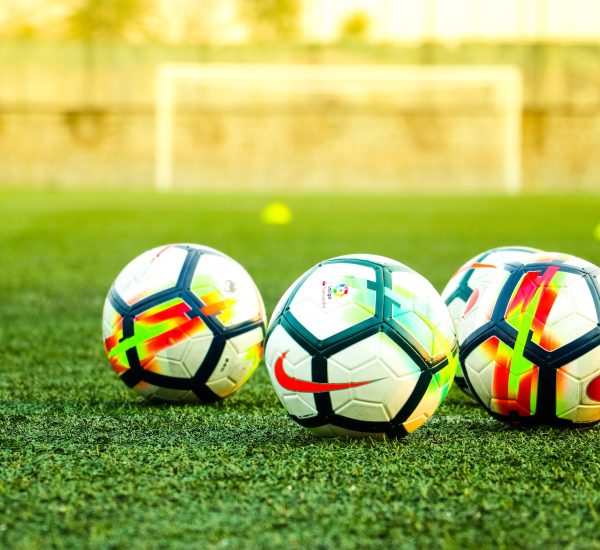Soccer receiving drills can be done with a variety of different techniques. These include: Petagon passing drills, Head receives, and Simple Circles.
Each technique is designed to help your players develop their skills and improve their game. It’s important to know which technique to practice for each drill to make sure you are receiving as effectively as possible.
Simple Circle soccer receiving drills
Simple Circle soccer receiving drills are a great way to improve your players’ passing and receiving techniques. Players should start out in a circle eight to twelve yards long with one ball. Players on the outside pass the ball to the players inside.
The inside players then receive and dribble the ball to their teammates on the outside. Players can practice receiving and passing with this drill until they feel comfortable doing so in a game.
This soccer receiving drill works on speed, accuracy, and control of the ball. To do this, you’ll need a soccer ball and three cones spaced five yards apart. The idea is to dribble around the cones without touching the center cone.
This will help players get used to maintaining control of the ball while they move around the cones. This exercise can be used for all levels of soccer players, including beginners.
The first player in the circle dribbles to the center, makes a 1-2 pass to player 2, and then follows the ball to player three. After the pass, the target player plays the ball to the next player, who dribbles back down the line. Repeat the drill and switch the players.
Petagon passing drills
If you’re looking to improve your soccer receiving skills, one of the best things to do is to practice Petagon passing drills. These exercises involve splitting opponents and moving the ball around an eight to twelve yard square. This drill helps you develop quick decision-making skills while practicing with the ball.
First, divide the team into groups of three players. Each team member starts on a side of the area with a soccer ball. The player closest to the outside of the grid passes the ball to the player in the middle. The other player, who has the ball, tries to intercept the pass and return the ball to the player who passed it to them.
Second, make sure the goalkeeper is involved. Goalkeepers are an extra defender on the field and should be included in all passing drills. Petagon passing drills for soccer receiving aim to teach players to focus on the direction of the ball and to control it with the first touch. This will lead to better passing skills and a smoother ball for the next player.
The first Petagon passing drill focuses on receiving and passing skills. In this drill, two teams compete to complete as many one-touch passes as possible. The team with the ball starts on offense while the other team plays defense. Use a square-shaped playing area with sides that are about 10 to 15 yards long. As the players get better, you can shrink the playing area a little. For the castle, you can use a tall or disc cone.
Turn or Play drills
Turn or play soccer receiving drills can be a great way to develop players’ ability to receive passes. This skill can make the difference between winning games and losing them. Players need to be able to get the ball to their teammates while controlling their body position. This drill can help players improve their receiving and passing skills at the same time.
The first step is to have the players stand a comfortable distance apart and start passing using the inside of the feet. This will teach the soccer players how to receive the ball with ease and to pass it to the next player who can kick forward. Of course, the goal of the game is to score. Practicing this skill is essential to keep players’ concentration throughout the game.
The second step is to teach players how to turn while receiving the ball. This drill is often done with two groups of players. The first group passes the ball to the other player, while the second group dribbles the ball. Both groups must communicate with one another while receiving the ball.
Head receive
The head receive in soccer receiving drills is the opposite of heading. In head receive, the body is at a 90-degree angle to the direction of the ball’s flight and balance is maintained on the balls of both feet. Some players prefer to have one foot ahead of the other to create balance. The center of the ball is then contacted on the player’s natural hairline. The aim is to create space for the receiving player to receive the ball.
A good soccer receiving drill should involve the entire body, and the player should practice a range of different movements. This can be done with a partner. It is a good way to develop control of the ball and improve coordination. Aside from developing coordination, it is important to practice opening the hips, which is a fundamental movement in soccer.
Players in the center must also work on their turning and receiving skills. They need to know where to receive the ball and how to turn quickly. This will help them improve their game and improve their chances of scoring.
Open body receive
When taking a soccer pass, the player should open his body as much as possible when receiving the ball. The player should also maintain a good level of body awareness when he is receiving the ball. During this drill, he should keep his shoulders and head open and keep his eyes open for the defenders behind him.
Players receiving the ball in the middle should do so with an open body position to give themselves more time to make a pass. It will also allow them to turn and receive the ball under pressure and maximize their chances of making a good pass. A good technique for receiving the ball in an open body position is to practice it with a partner.
During soccer receiving drills, players should be open with the ball and try to get space as they move towards the ball. This will help them develop spatial awareness and improve their vision.
Turning while receiving
Turning while receiving in soccer drills is a technique that is beneficial to players on both sides of the field. The main purpose of this drill is to teach players how to properly check their shoulders and turn while receiving a ball.
It can also improve their decision-making skills. It is essential to check your body while receiving the ball and ensure that you’re in an open position. This will help you pass the ball to your teammates quickly.
Receiving the ball can be challenging. The key is to have good body position to receive the ball and to turn in the right direction based on the quality of the pass. Practice receiving the ball from different angles and with realistic pressure. You can modify the drill to accommodate different skill levels and age groups.
Turning while receiving in soccer drills is a great technique to improve players’ first touch, as a good touch can lead to a definite advantage for an attacking player. In addition to this, it also gives a player the chance to set the tempo of the team’s attacks.
One-two receive
A One-two receive is a typical passing drill. It starts with a direct pass from the P1 to the P2. The player should play the pass accurately and with minimal lateral movement. Players can vary the power and height of the pass. The goal of this drill is to improve the players’ first touch of the ball on the field. It should also help players learn to keep the ball close to their body and check in with their teammates.
This is an excellent receiving technique for players who want to maintain possession of the ball at all times. The one-two works in triangles and involves good timing, passing, and speed of play. The first touch must be accurate and the second touch should be quick. This will allow the player to move forward toward the attacking goal.
This drill can be conducted with multiple groups and at different speeds. The attacking group tries to control the ball and score while the defending team tries to intercept the passes. If this doesn’t work, the defensive players try to recover possession by pressing the players and tackling. If the attack team loses possession, the attacking player has to switch with the defensive player.



